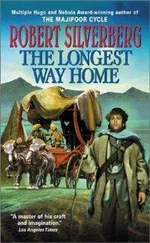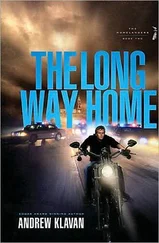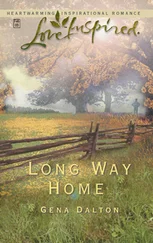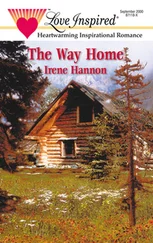CARLOS ACOSTA

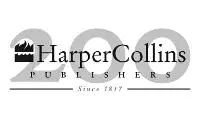
Copyright Contents Title Page Copyright Review Part One: 1973–1988 Chapter One: My Family Chapter Two: The Photograph Chapter Three: Beginning Chapter Four: The First Grand Plié Chapter Five: Plagued By Uncertainty Chapter Six: With Hate In My Heart Chapter Seven: A Prisoner Chapter Eight: Pinar Del Río Part Two: 1989–1993 Chapter Nine: Take Off Chapter Ten: The Grand Prix De Lausanne Chapter Eleven: History Repeats Itself Chapter Twelve: Chery’s Decision Chapter Thirteen: London At Eighteen Chapter Fourteen: A Year Without Dancing Chapter Fifteen: Beginning Again Chapter Sixteen: Madrid Part Three: 1993–2003 Chapter Seventeen: Fears And Insecurities Chapter Eighteen: Chapter Nineteen: The World Will Be Mine Chapter Twenty: Goodbye Houston Chapter Twenty-One: The Lady And The Three Musketeers Chapter Twenty-Two: A Moment Of Happiness Acknowledgements About the Author About the Publisher
William Collins
An imprint of HarperCollins Publishers Ltd. 1 London Bridge Street London SE1 9GF
www.harpercollins.co.uk
This Harper Perennial edition published 2008
First published in Great Britain by Harper Press in 2007
Copyright © Carlos Acosta 2007
Original translation into English © Kate Eaton 2007
Carlos Acosta asserts the moral right to be identified as the author of this work
A catalogue record for this book is available from the British Library
All rights reserved under International and Pan-American Copyright Conventions. By payment of the required fees, you have been granted the non-exclusive, non-transferable right to access and read the text of this ebook on-screen. No part of this text may be reproduced, transmitted, down-loaded, decompiled, reverse engineered, or stored in or introduced into any information storage and retrieval system, in any form or by any means, whether electronic or mechanical, now known or hereinafter invented, without the express written permission of HarperCollins ebooks
HarperCollins Publishers has made every reasonable effort to ensure that any picture content and written content in this ebook has been included or removed in accordance with the contractual and technologial constraints in operation at the time of publciation
Source ISBN: 9780007250776
Ebook Edition © FEBRUARY 2009 ISBN: 9780007287437
Version: 2017-05-03
From the reviews of No Way Home: Contents Title Page Copyright Review Part One: 1973–1988 Chapter One: My Family Chapter Two: The Photograph Chapter Three: Beginning Chapter Four: The First Grand Plié Chapter Five: Plagued By Uncertainty Chapter Six: With Hate In My Heart Chapter Seven: A Prisoner Chapter Eight: Pinar Del Río Part Two: 1989–1993 Chapter Nine: Take Off Chapter Ten: The Grand Prix De Lausanne Chapter Eleven: History Repeats Itself Chapter Twelve: Chery’s Decision Chapter Thirteen: London At Eighteen Chapter Fourteen: A Year Without Dancing Chapter Fifteen: Beginning Again Chapter Sixteen: Madrid Part Three: 1993–2003 Chapter Seventeen: Fears And Insecurities Chapter Eighteen: Chapter Nineteen: The World Will Be Mine Chapter Twenty: Goodbye Houston Chapter Twenty-One: The Lady And The Three Musketeers Chapter Twenty-Two: A Moment Of Happiness Acknowledgements About the Author About the Publisher
‘The dazzling Carlos Acosta is the Cuban Billy Elliot. In his extraordinary memoir, the crippling physical effort of becoming a ballet dancer, the slog, the agony of injuries, the rivalries and bitchiness are vividly evoked. His fascinating recollections suggest Acosta is a tormented genius’
Daily Mail
‘From the atmospheric depiction of his poor childhood in Havana to his domination of the world of dance, this is a truly inspiring tale’
Sunday Telegraph
‘The life of the ballet dancer Carlos Acosta has all the hallmarks of a bestseller. Acosta’s voice is instantly likeable, and you follow his discovery of the trappings of the west and his quest to make his name at the Royal Ballet with a mixture of wonder, respect and, crucially, affection’
Financial Times
‘A superb book’
Daily Express
‘Acosta writes vividly about these poor but happy years, bringing the streets of Los Pinos to life’
Dancing Times
‘Warm and funny’
Economist
Title Page CARLOS ACOSTA
Copyright Review Part One: 1973–1988 Chapter One: My Family Chapter Two: The Photograph Chapter Three: Beginning Chapter Four: The First Grand Plié Chapter Five: Plagued By Uncertainty Chapter Six: With Hate In My Heart Chapter Seven: A Prisoner Chapter Eight: Pinar Del Río Part Two: 1989–1993 Chapter Nine: Take Off Chapter Ten: The Grand Prix De Lausanne Chapter Eleven: History Repeats Itself Chapter Twelve: Chery’s Decision Chapter Thirteen: London At Eighteen Chapter Fourteen: A Year Without Dancing Chapter Fifteen: Beginning Again Chapter Sixteen: Madrid Part Three: 1993–2003 Chapter Seventeen: Fears And Insecurities Chapter Eighteen: Chapter Nineteen: The World Will Be Mine Chapter Twenty: Goodbye Houston Chapter Twenty-One: The Lady And The Three Musketeers Chapter Twenty-Two: A Moment Of Happiness Acknowledgements About the Author About the Publisher
PART ONE
1973–1988
CHAPTER ONE
I grew up in Los Pinos, a neighbourhood in the suburbs of Havana, a combination of city and country where asphalt streets and wooden houses vividly contrast with the vegetation that fills every available space and lends the landscape infinite varieties of green. Los Pinos was famous for La Finca, a leafy area of fruit trees and red earth covering some five square kilometres, extending as far as the Quinta Canaria Convent to the east, the district of La Güinera to the north and Vieja Linda to the west. Legend had it that La Finca was inhabited by spirits who turned themselves into owls and hooted not only at night-time but also during daylight hours.
To reach La Finca you had to climb a hill past the Russian lorry repair shop and carry on until you got to Cundo’s place. Cundo was the best known salesman in the neighbourhood. His house was essentially a small cooperative which sold sugar cane, coconuts, fresh goat’s milk, mangos and tobacco. A few metres on were the fibreboard caves – half-finished abandoned houses, their floors lined with pieces of cardboard, with grass and weeds growing high around them. This spot was commonly known as the Place of Infidelity. After crossing the first of several streams, where you could fish for prawns, there were natural caves draped with green creepers and huge malanga plants known as elephants’ ears. From there you could no longer see the lorry repair shop, nor Cundo’s house. The tall royal palms and the avocado and mamey bushes blocked out the sun, making the air dank and humid. The terrain became increasingly irregular. Hills would suddenly loom up that were awkward to climb. You had to part the undergrowth with a garabato , a hooked stick usually made from a tree branch, then help yourself along by grabbing on to tree trunks. The atmosphere was full of enchantment as the spirits-turned-owls hooted out their sorrows and songs all around you.
Читать дальше





